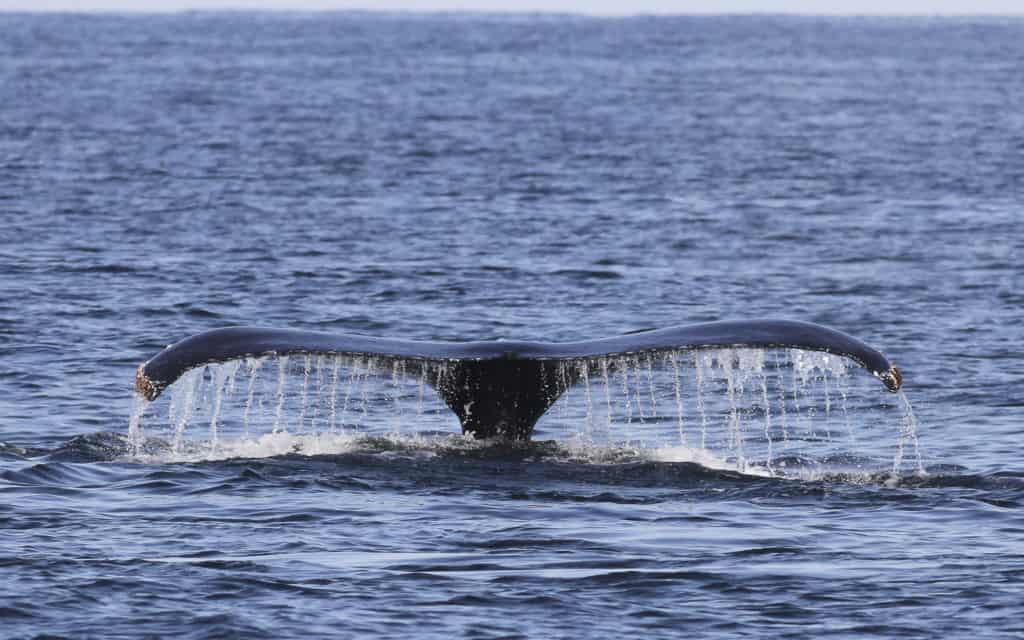Creature Feature

Whale Watching in the Mid-Atlantic
By Wayne Bierbaum
During early October, the Atlantic coastal waters are filled with schools of migrating fish. Menhaden, herring, butterfish, and mackerel move south and are followed by larger fish, seals, dolphins, and whales. If you can get a calm day, whale watching is at its best now.
The most common whale seen near shore is the humpback whale. They are up to around 30 feet long, with the females getting larger than males. Distinguishing characteristics are huge pectoral fins with white undersides that are one-third their body length and a knobby lower jaw that projects farther than the upper.
The humpback is a baleen whale with large comb-like plates that filters out food from the huge volume of water they gulp into their mouth. Their tongue cleans the baleen plates and helps swallow the fish and squid they caught.
The most common method of feeding is lunging. They will swim under a bait ball and then suddenly lunge upward and open their mouth to engulf the fish. Baleen traps the fish as the water is expelled. Lunge feeding is very energy consuming and at times they have been observed to do low energy trap feeding. In this technique, the whale swims up to and into a school of fish with its mouth wide open. It then will move its large pectoral fins in a way exposing the white undersides and herd the fish into its mouth. Birds attacking above also help to herd the fish.
Bubble netting is also a technique used by humpback whales. Several whales will swim in a circle under a school of fish continuously exhaling a stream of bubbles, making a bubbly net that concentrates the fish. The whales swim up through the middle of the ‘net’ with their mouths open. With these methods of feeding, the whales may eat up to 3,000 pounds of food a day.
Humpback whales migrate from their feeding grounds in the north Atlantic to the calving grounds in the West Indies. There are fewer schooling fish near the equator and the whales usually lose weight and may hardly eat at all. The females will have one 13-foot offspring every two or three years. The young feed on their mother’s milk for 10 months, which carries them into the northern feeding grounds.
Humpback whales have been internationally protected by the International Whaling Commission since 1966 and federally designated as an endangered species since 1970. Even so, fishing nets and ship strikes frequently kill them. Many become tangled in abandoned netting and drown or starve. Loud engine noise and underwater explosions disrupt their ability to communicate and locate each other and to find food. Over the past 10 years, over-harvesting of forage fish threatens their ability to fatten up for a long journey. Even so, the humpback whale population seems to be recovering although not quite to their previous numbers.
Many groups are trying to provide further protection for whales. Simple solutions like limiting catching forage fish, stopping the practice of abandoning nets, and slowing shipping near the coast are trying to be enacted. Whale watching can be really fun but hopefully the tourist boats do not harass the animals so much that they will not feed.
